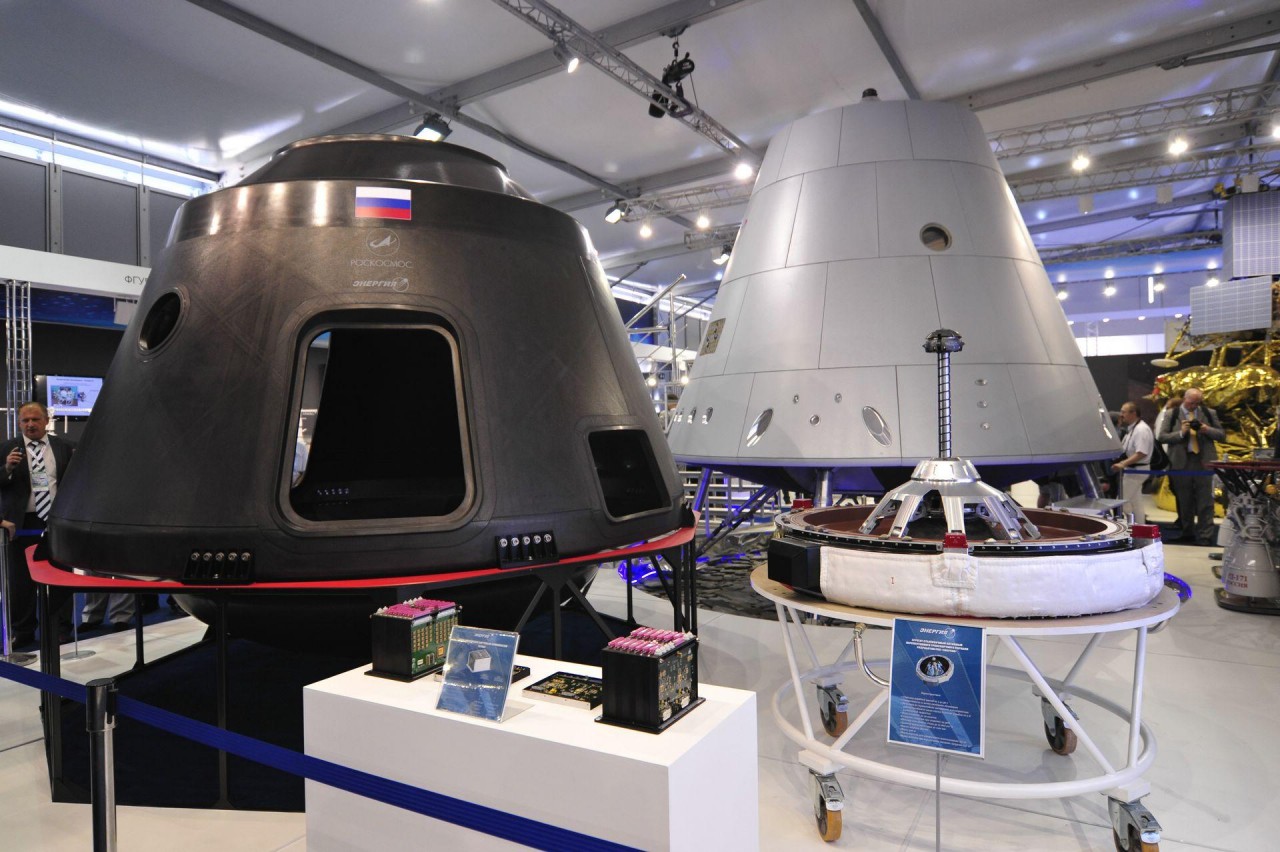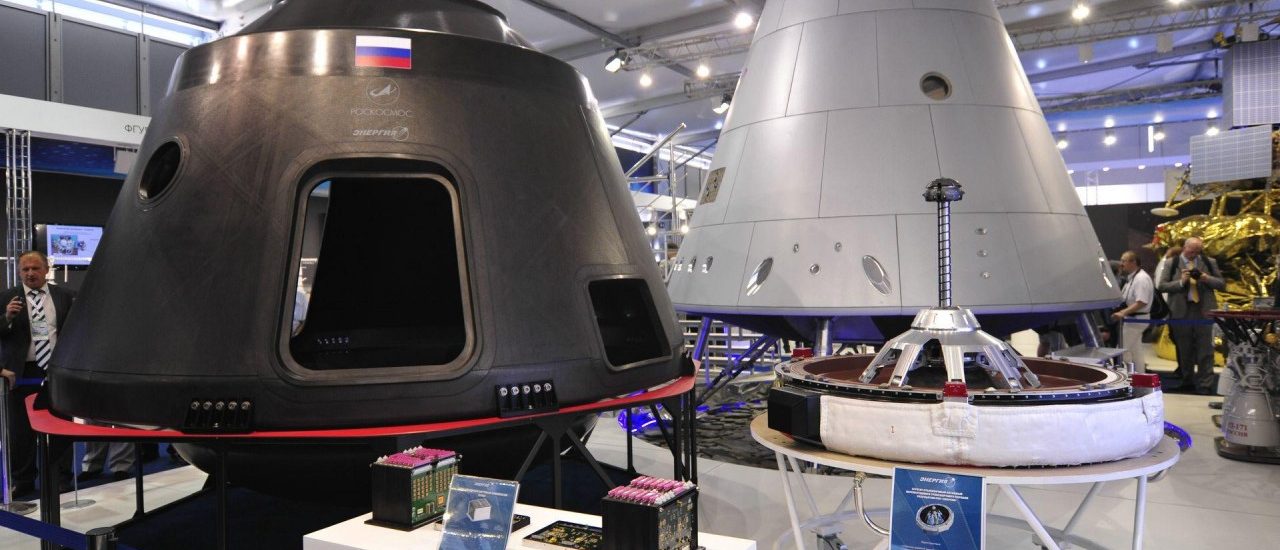Projects of the Engineering Center "Kinetics" in the field of industrial design and design
Pilotable transport ship of the new generation "Federation"

At the invitation of the RKK "Energia", our team took an active part in the development of the piloted transport ship of the new generation, which later received the name "Federation".
Developed by the Energy Energy Corporation The pilotable transport ship of the new generation (PTK-NP) is intended for the delivery of people and goods to the orbital stations in the near-earth orbit and to the moon. For the Federation, a modular construction of a base ship was made in the form of functionally completed elements – a returned apparatus and a motor compartment. Household compartments will simply dock, depending on the task that will stand in front of the Federation. The ship will be loony, with a multi-conical returned part of a truncular-conical shape and a one-time cylindrical aggregate motor compartment.
The maximum crew of the Federation will be 6 people (with flights to the moon – up to 4 people). It is designed for a comfortable flight of four cosmonauts with a large margin of food and water.
A new generation ship is designed to hold up to ten missions. In the autonomous flight mode, the transport ship will be able to be in orbit up to 30 days, and during flight as part of the orbital station – up to one year. The total mass of the spacecraft when making a flight to the moon will be 19 tons, when flying to the orbital station – 14.4 tons, the mass of the returned apparatus is 9 tons. The maximum length of the ship is 6.1 meters.
Work a total of a concept to the final product took about 4 years.
The first option, or rather, even, the concept of layout was presented at the Aviakosmic Salon Max 2011.










Since then, the initial concept of layout and interior of the ship has undergone significant changes – many ergonomic tests were conducted, tested engineering solutions, assembled prototypes. The final full-scale design and landing layout of the regular layout of the PTK-NP ship was presented at the Aviakosmic Salon of Max-2013. And in 2015, the final layout was presented at the aerospace salon, which also demonstrates the unique trim of the future ship.



















For the first time in the world, an innovative system of thermal protection system was used for the first time in the world. RKK "Energia" has developed a completely new material with unique heat-shielding properties for a safe passage of the ship of the dense layers of the Earth's atmosphere. This ultra-easy material is patented. In appearance, it resembles a dense composite material with carbon inclusions, which is peeled with small fragments and takes on a high temperature when entering the tight layers of the atmosphere at very high speed.
Also, the use of new structural materials with improved strength characteristics and carbon styling ensured a decrease in the mass of the spacecraft design by 20-30%, which will extend its life.
The "Federation" is favorably different from the American "Orion" and by what will allow members of the crew to be in weightlessness in full growth during a long flight.
This is an important competitive advantage over Lokhid Martin (Lockheed Martin) on the request of NASA by a new American spacecraft, in which astronauts are forced to work in a semi-bent state, which is much less comfortable. And "Orion", and the "Federation" have the shape of a truncated cone, but the American version is lower in height, so astronauts can fly in it only half a walk.
Another important point, which distinguishes a new Russian spacecraft from the American, is the presence of an outrunning-sanitary device (ACS), while NASA astronauts on the Orion ship will use diapers. A special tank during the flight will be attached to four bolts to the surface of the ship, it will be covered with a dense insulating curtain.
Probably, it is not necessary to explain how much more comfortable to use the ACS, given the innovative system of the water cycle on board the international space station, in addition, now on the ISS, a limited number of bathrooms, therefore, an additional "space-toilet", the ship-module will not definitely not be.
Also for the Russian ship by our specialists, together with the Moscow NGO "Star" near Moscow, developed fundamentally new seats of reproductive use from composite materials. NGO "Star" – known to the whole world by the developer and manufacturer of the facilities of Kazbek and Flight Space Spaces for Social Spacecraft.
The first test flight of the "Federation" in the unmanned mode on the "Proton-type carrier missiles" is scheduled for 2021, the second and third – for 2023 for flights in the unmanned and manned modes to the International Space Station.
The PTK-NP Test Program includes five launches: three unmanned and two – piloted. The first three test starts are planned to be held on the "protons" from Baikonur, and the subsequent, already on the manned program can be implemented on new carrier missiles from the Eastern cosmodrome.
















